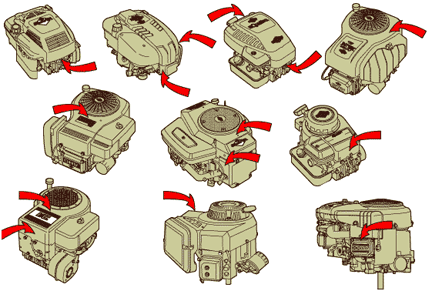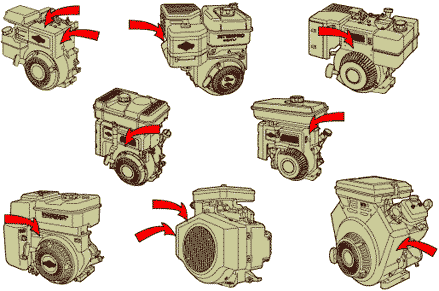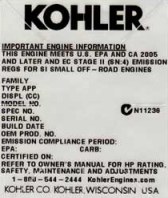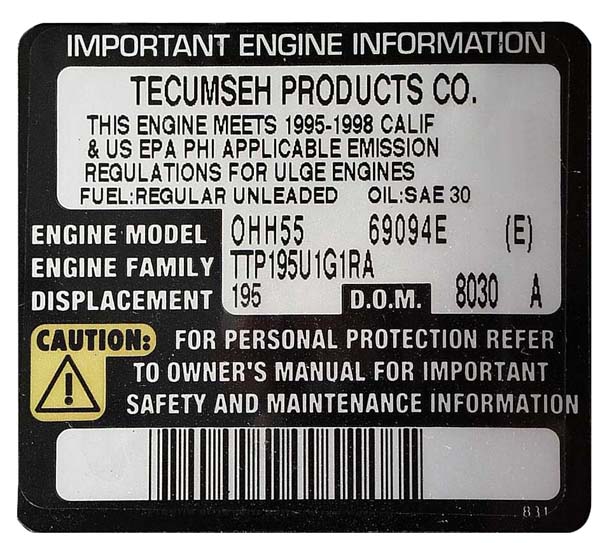Ethanol in gasoline causes many serious problems to the small engines used on lawn mowers, snow throwers, lawn tractors, generators, chain saws, weed trimmers and other chore performers. The ethanol is alcohol and acts as a corrosive to the metal, rubber and steel in carburetors, fuel lines and fuel tanks. It also draws the moisture out of the air that is in your gas can or gas tank and causes water to form with the gas.
Ethanol eats the carburetor bodies, rubber seals and gaskets just like battery acid and creates a very serious fire hazard.
In a typical float bowl carburetor fuels enters the carburetor through an inlet hole that is opened and closed by a needle valve that sits on top of a plastic air filled float. When the engine is running fuel is drawn up out the bowl and as the fuel level inside the bowl drops the float lowers and this drops the needle valve out of the way so more fuel can enter. This is similar to a float valve in a toilet tank that drops when the water leaves the tank to let more water come in.
Over time the needle valve and the seat it plugs are damaged by the ethanol and water that that is drawn from the air and then the needle can no longer stop the gas from coming into the carburetor. The fuel which is typically gravity fed continues to flow into the carburetor, flooding it and finds it’s way into the engine cylinder and crankcase. It mixes with the engine oil and can flow into and out of the muffler and air intake. It is very common for a full tank of gas to completely empty into an engine while the machine is just sitting.
This is extremely dangerous. You can cut your whole lawn with no problems and then put your mower back in the shed or in the garage under your bedroom and a chain of events can follow that can burn down your out building or house. Unknown to you, when you park the machine the needle valve may not be completely seated in it’s valve seat and the fuel begins to flow from the tank into the engine, just like a toilet that continues to run after flushing. The fuel, pushed by gravity, flows to the area of least resistance and can come out of the carburetor, the muffler and the breather. This builds up extremely flammable vapors and a spark or heat source can ignite it and start a full blown fire. I don’t think this is way most of us want to heat things up in the bedroom.
This particular hazard can be eliminated by installing, and more importantly, using an inexpensive fuel shutoff valve. This hazard is well known by engine and equipment manufacturers and some newer machines will come with built in fuel shutoff valves, but most don’t. We asked one engine company representative why all the machines didn’t come with this feature and were told that while it would be ideal, there is a dispute between the companies that manufacture the equipment and the companies that manufacture the engines as to who should pay for it. In mass production it may only cost pennies per machine to add this safety device, but when they are making millions of machines those pennies add up. Forgive our small business for suggesting it, but these costs could be passed on to the purchaser and if just one child, one mother or one father’s life could be saved by that fuel valve being installed and used then that is worth millions more than the savings the manufacturers are seeking.
For safety and to extend the life of your carburetor we recommend you do the following:
1. Add fuel stabilizer to your gas can each fill up at the gas station. This prevents gas from going stale (which it normally does after 30+ days) and prevents water from forming in the gas. Be sure that all of your fuel containers are properly sealed and stored so that they can’t be contaminated by water or dirt.
2. Use your machine’s existing fuel shutoff valve or install a fuel shutoff to be able to run the carburetor out of gas between each use.
3. Replace fuel line every year or two to prevent the hazard caused by rotten fuel line leaking or sending rotten rubber particles into the carburetor.
4. Allow the engine to cool off before refilling with gasoline.
5. If you smell fresh gasoline on your machine or in it’s storage area roll machine outside and either empty the gas or call for service.
6. If your engine spews liquid out the muffler when starting or begins to falter and smoke when running your carburetor may have failed and needs inspecting and repair. If the gas has mixed with the oil you may think it is just oil leaking, but it can be the oil and gas mixed. Do not use until problem has been identified and corrected and do not store the machine inside.
7. If the level of your gas tank drops while the engine is at rest or you see that the level of your engine oil has risen or you can smell gasoline on your oil dipstick do not use the machine until it can be repaired and do not store the machine inside.
Here are some incidents that could have been prevented by following the simple instructions above:
- Lawnmower cause of blaze that caused $150,000 to $200,000 in damage to Southridge Road home in Hampden
-
Exploding lawn mower burns down man’s home
- Officials: Lawn Mower to blame in Danville Garage Fire






